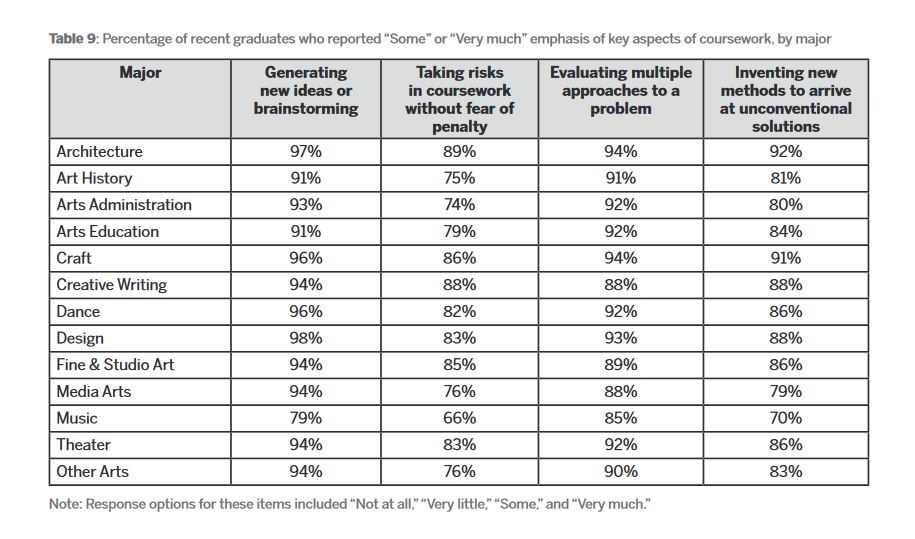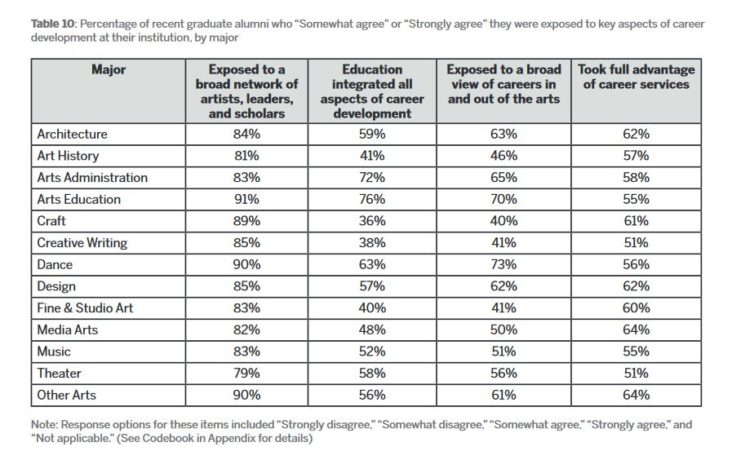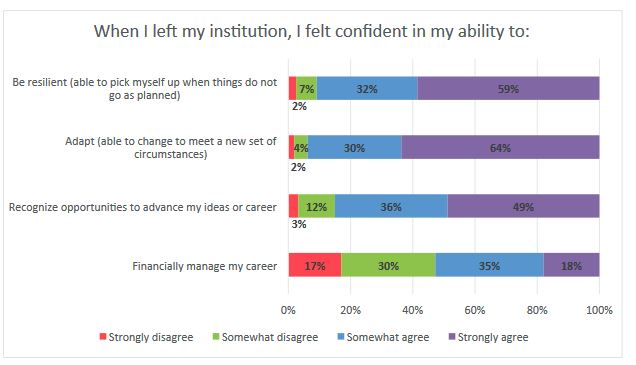Going back to the Strategic National Arts Alumni Project special report I referenced yesterday, there were findings in another area that grabbed my interest. The following chart breaks down responses to questions about brainstorming and risk taking being encouraged in artist training programs.
Keep in mind that all these results are based on alumni perceptions of their training program. The report authors note the outlier status of Music when it comes to graduates who responded “that brainstorming and risk taking without fear of penalty were present to a “Some” or “Very Much” degree as part of their coursework.
Alumni from all but one major overwhelmingly reported their curriculum emphasized generating new ideas or brainstorming. The outlier in this dimension was music majors—only 79% of whom reported their curriculum emphasized generating ideas or brainstorming.
There was a 23% range in responses by major when comparing coursework emphasis on taking risks without fear of penalty. Architecture majors and creative writing majors (89% and 88%, respectively) were the most likely to indicate curricula focused on this area, while music majors were the least likely (66%).
Music majors (70%) indicated the lowest level of coursework emphasis on inventing methods to arrive at unconventional solutions while architecture majors (92%) indicated the highest.
My initial assumption is that because music programs often emphasize technical proficiency, there isn’t a lot of room for risk taking, brainstorming and inventing unconventional methods. My second assumption is that the programs are designed this way due to the high demands of orchestral auditioning.
Now the million dollar question: Is this approach beneficial or detrimental to students?
On one hand, not only are the number of orchestral performing positions shrinking, the relations between management and musicians in contract negotiations are frequently hostile.
On the other hand, preparing students to perform at a highest level of excellence in the most hostile scenario could be viewed as an ideal path in the context of “if you can survive this…” It would sort of make them the elite special forces of the arts world.
But who really wishes that for their students? Since the majority of graduates won’t end up working in an orchestral environment, don’t they need to acquire practice in brainstorming, risk taking in a low stakes environment and pursuing unconventional paths? (And note that brainstorming, risk taking and employing unconventional means are also traits valued in special forces.)
What do people who focused on studying music think? Any validity to my assumptions? Other forces at work? Do these numbers reflect something else? Is the current process good/bad for graduates?
You’re tired writing a college essay? Make an order at the Best essay writing service and get your papers done superb fast!





Thanks for what you are doing to bring cultural change to the arts. It is so important to represent everyone.…